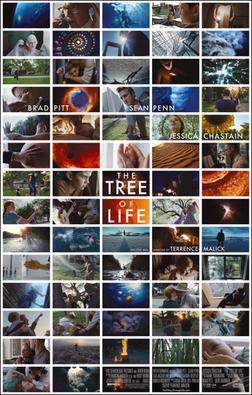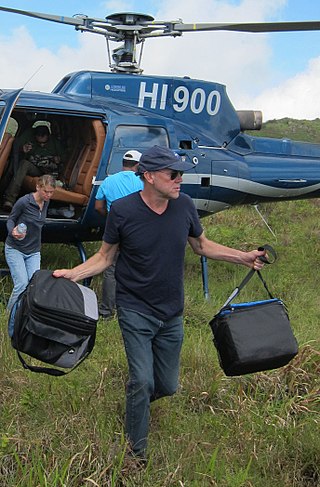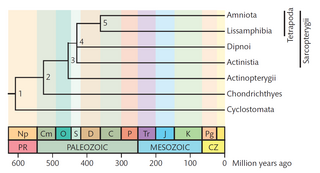This disambiguation page contains the primary topic and one other topic for the ambiguous title. Please expand it by adding additional topics to which the title refers, being sure to follow MOS guidelines.(November 2023) |
Timetree may refer to:
This disambiguation page contains the primary topic and one other topic for the ambiguous title. Please expand it by adding additional topics to which the title refers, being sure to follow MOS guidelines.(November 2023) |
Timetree may refer to:

The Cornaceae are a cosmopolitan family of flowering plants in the order Cornales. The family contains approximately 85 species in two genera, Alangium and Cornus. They are mostly trees and shrubs, which may be deciduous or evergreen, although a few species are perennial herbs. Members of the family usually have opposite or alternate simple leaves, four- or five-parted flowers clustered in inflorescences or pseudanthia, and drupaceous fruits. The family is primarily distributed in northern temperate regions and tropical Asia. In northern temperate areas, Cornaceae are well known from the dogwoods Cornus.

Cobra is the common name of various snakes, most of which belong to the genus Naja.

The Legend of Zelda: Oracle of Seasons and The Legend of Zelda: Oracle of Ages are two 2001 action-adventure games in The Legend of Zelda series, developed by Flagship and published by Nintendo for the Game Boy Color.

In biology, a clasper is a male anatomical structure found in some groups of animals, used in mating.

One Tree Hill is an American drama television series created by Mark Schwahn, which premiered on September 23, 2003, on The WB. After the series' third season, The WB merged with UPN to form The CW, and from September 27, 2006, the series was broadcast by The CW in the United States until the end of its run in 2012. The show is set in the fictional town of Tree Hill in North Carolina and initially follows the lives of two half-brothers, Lucas and Nathan Scott, who compete for positions on their school's basketball team and the drama that ensues from the brothers' romances.
Phyllomys is a genus of arboreal spiny rat, geographically restricted to the forests of eastern Brazil.
The tree of life or universal tree of life is a metaphor, model and research tool used to explore the evolution of life and describe the relationships between organisms, both living and extinct, as described in a famous passage in Charles Darwin's On the Origin of Species (1859).
The affinities of all the beings of the same class have sometimes been represented by a great tree. I believe this simile largely speaks the truth.
Makalata is a genus of rodents in the family Echimyidae.

The Tree of Life is a 2011 American epic experimental coming-of-age drama film written and directed by Terrence Malick. Its main cast includes Brad Pitt, Sean Penn, Hunter McCracken, Laramie Eppler, Jessica Chastain, and Tye Sheridan in his debut feature film role. The film chronicles the origins and meaning of life by way of a man's early life memories of his family living in 1950s Texas, interspersed with imagery of the origins of the known universe and the inception of life on Earth.

Terrabacteria is a taxon containing approximately two-thirds of prokaryote species, including those in the gram positive phyla as well as the phyla "Cyanobacteria", Chloroflexota, and Deinococcota.

Thrichomys is a genus of South American rodents in the family Echimyidae. It contains at least five species, found in Bolivia, Brazil and Paraguay. They are as follows:

Molecular Evolutionary Genetics Analysis (MEGA) is computer software for conducting statistical analysis of molecular evolution and for constructing phylogenetic trees. It includes many sophisticated methods and tools for phylogenomics and phylomedicine. It is licensed as proprietary freeware. The project for developing this software was initiated by the leadership of Masatoshi Nei in his laboratory at the Pennsylvania State University in collaboration with his graduate student Sudhir Kumar and postdoctoral fellow Koichiro Tamura. Nei wrote a monograph (pp. 130) outlining the scope of the software and presenting new statistical methods that were included in MEGA. The entire set of computer programs was written by Kumar and Tamura. The personal computers then lacked the ability to send the monograph and software electronically, so they were delivered by postal mail. From the start, MEGA was intended to be easy-to-use and include solid statistical methods only.

TimeTree is a free public database developed by S. Blair Hedges and Sudhir Kumar, now at Temple University, for presenting times of divergence in the tree of life.. The basic concept has been to produce and present a community consensus of the timetree of life from published studies, and allow easy access to that information on the web or mobile device. The database permits searching for average node times between two species or higher taxa, viewing a timeline from the perspective of a taxon, which shows all divergences back to the origin of life, and building a timetree of a chosen taxon or user-submitted group of taxa. TimeTree has been used in public education to conceptualize the evolution of life, such as in high school settings. David Attenborough's Emmy Award-winning film and television program Rise of Animals used Hedges and Kumar's circular timetree of life, generated from the TimeTree database, as a framework for the production. The timetree was brought to life using animated computer-generated imagery in scenes every 10 minutes during the 2-hour movie. The original development of TimeTree, by Hedges and Kumar, dates to the late 1990s, with initial support from NASA Astrobiology Institute. Since then, it has been supported by additional grants from NASA, and by NSF and NIH. The current version (v5) was released in 2022 and contains data from 4,075 studies and 137,306 species.

Hydrobacteria is a taxon containing approximately one-third of prokaryote species, mostly gram-negative bacteria and their relatives. It was found to be the closest relative of an even larger group of Bacteria, Terrabacteria, which are mostly gram positive bacteria. The name Hydrobacteria refers to the moist environment inferred for the common ancestor of those species. In contrast, species of Terrabacteria possess adaptations for life on land.

Stephen Blair Hedges is Laura H. Carnell Professor of Science and director of the Center for Biodiversity at Temple University where he researches the tree of life and leads conservation efforts in Haiti and elsewhere. He co-founded Haiti National Trust.
Triumph of the Vertebrates is a 2013 British documentary film by David Attenborough. It is about the evolution of vertebrates. The first part is From the Seas to the Skies, while the second is Dawn of the Mammals. The film uses a circular timetree of life generated by scientists S. Blair Hedges and Sudhir Kumar, from their TimeTree database, as a temporal framework for the production. The timetree was created using animated computer-generated imagery in scenes every 10 minutes during the 2-hour movie. The circular timetree was published by Hedges and Kumar in 2009 and Hedges was consulted during the production of the film.

PRR29 is a protein encoded by the PRR29 gene located in humans on chromosome 17 at 17q23.

A timetree is a phylogenetic tree scaled to time. It shows the evolutionary relationships of a group of organisms in a temporal framework.

Oliver Tree Nickell is an American musician. Born in Santa Cruz, California, Tree signed to Atlantic Records in 2017 after his song "When I'm Down" went viral and released his debut studio album Ugly Is Beautiful in 2020. He achieved international recognition with his songs "Life Goes On" in 2021, and "Miss You" in 2022. He released his second studio album Cowboy Tears on February 18, 2022, and his third studio album Alone in a Crowd was released on September 29, 2023.

James Stephen "Jimmy" Donaldson, more commonly known as MrBeast, is an American YouTuber. He is known for his fast-paced and high-production videos, which feature elaborate challenges and large giveaways. With over 210 million subscribers, he is the most-subscribed individual on the platform and the second-most-subscribed channel overall.